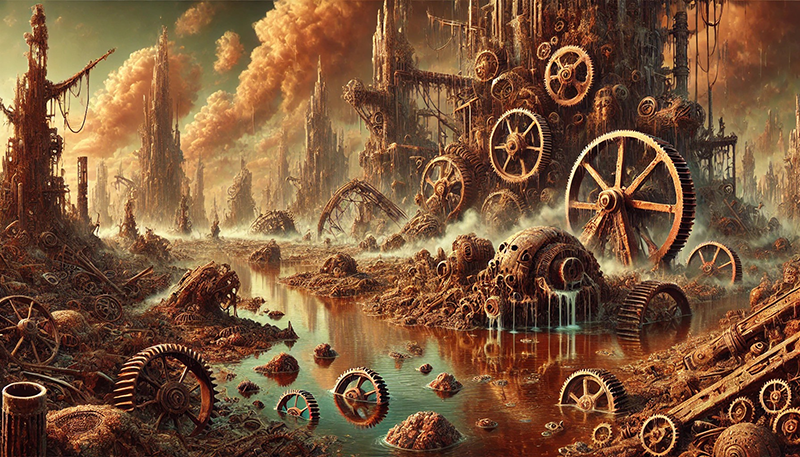The Rust Age |

|
The museum’s collection of ethnographic artifacts from the Rust Age (formally known as the Oxidocene) provides a glimpse into a long-vanished way of life. We know little of the reality of life in those times and what we imagine is probably idealized to some extent. It was a time of spiritual concerns, centered on various rituals, many of whose details are lost to us today.
The Rust Age is so named because many of the ceremonial artifacts were made of decaying metal, which was thought to have a sublime quality of character and texture of age. In some of the artifacts, the rust continues to decay and eat away at the core of the object. The decaying metal, along with delicate organic material such as feathers and leaves, was intended to create a sense of time passing and of the fleeting nature of life.
For most of the Rust Age, visual art was deeply tied to cultural and spiritual practices and was not considered a separate discipline. However, toward the end of that era, a few "proto-modernists" were fascinated by the purely aesthetic possibilities to be found in assemblage of natural materials such as pond-moss, bones, and feathers. The more practically-minded developed early media technology, precipitating a split between art and science that continues to this day.
| Figurines | |||||
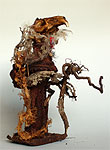 |
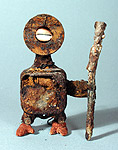 |
 |
 |
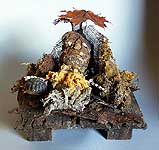 |
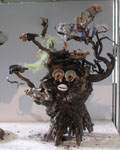 |
| Shamanic Figure |
Guardian Figure |
Ancestor Figure |
Sea Spirit |
Royal Figure | Tree Gnome |
| Ceremonial Artifacts | |||||
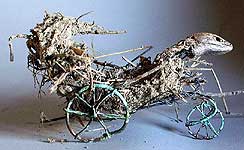 |
 |
 |
|||
| Lizard-Headed Mud Cart | Wooden Mask |
Mirror Mask |
|||
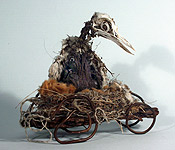 |
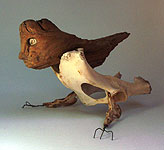 |
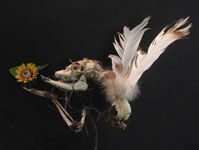 |
| Bird Cart | Simulacrum | Greeting Figure |
| Late Rust Age Art | |||||
 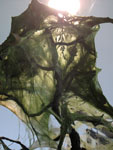 |
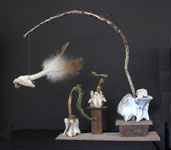 |
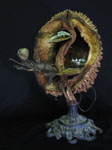 |
|||
| Pond-Moss Sculpture | Bone Sculpture | Jackfruit Egg | |||
| Media Technology | |||||
 |
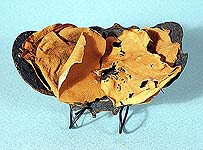 |
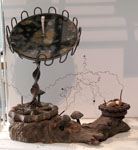 |
|||
| Fungus Lamp | Leaf Book | Cosmic Listening Device |
|||
Shamanic Figure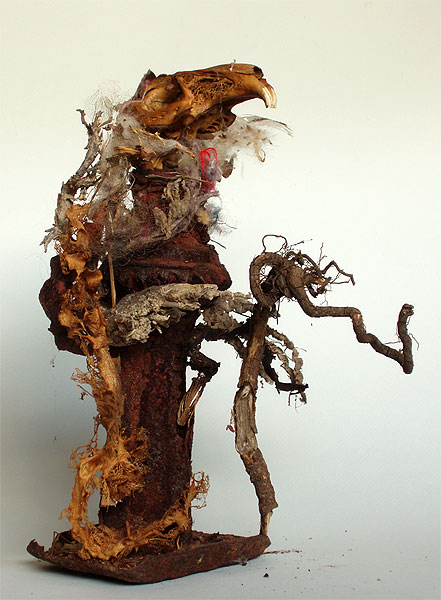
The shaman is represented in spirit form as an intermediary between the human and spirit worlds, with skull headdress, feathered neck ruffle, and traditional gnarled walking stick. The figure is made of bone, rusty metal, wood, lichen, and clothed in delicate organic filaments. |
Guardian Figure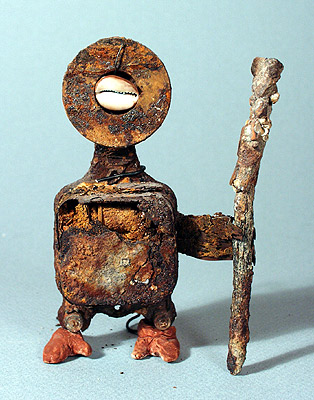
The guardian figure is a figure in a defensive posture who is in fact crumbling and exposing its mechanical innards. The figure was originally supposed to serve as a protector against certain demons, but its fragility and constant state of decay have transformed it into a symbol of the futility of relying on such talismans |
Ancestor Figure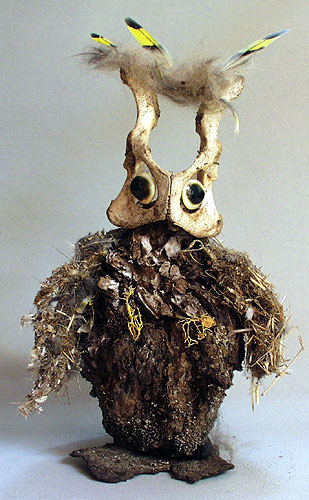
Ancestor figures were constructed from various organic materials, symbolizing the reinvestment of deceased ancestors' parts into new forms The figure shown here is made of bone, decaying wood, cat hair, feathers, mica, and tar. It has two mollusk opercula for eyes. |
Sea Spirit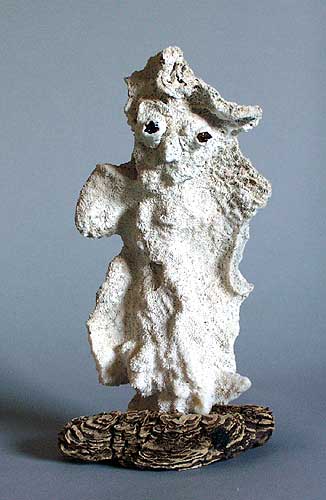
The sea spirit figure represents a helpful spirit that assisted shamans in finding the significant organic materials for use in constructing their objects. It is itself made from a beach find, a piece of anthropomorphic coral. |
Royal Figure
|
Tree Gnome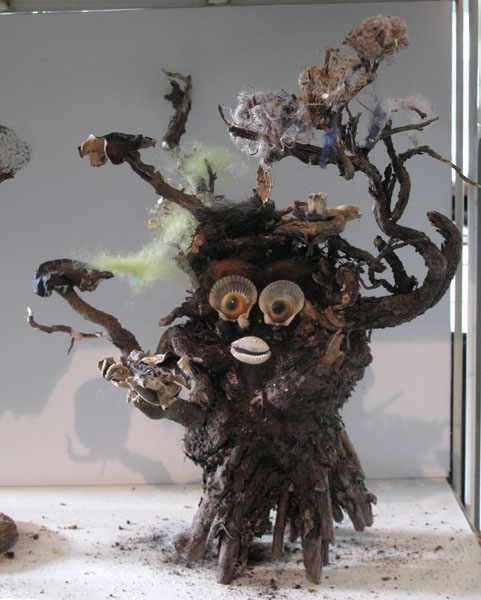
A fanciful fellow whose function was to present some small but precious object to passers-by |
Lizard-Headed Mud Cart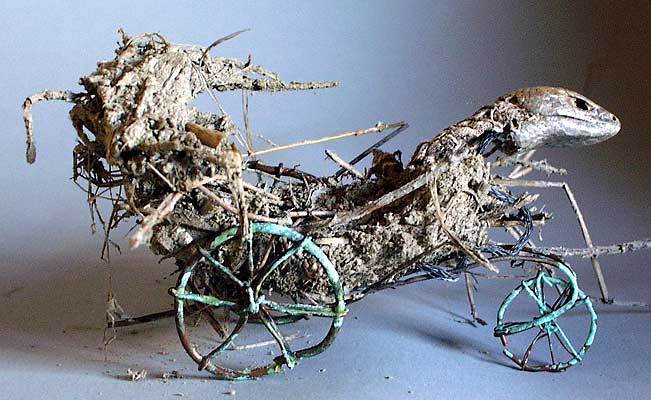
The only known artifact from the Mud Age is a wheeled cart believed to be a magic vehicle for navigating the spirit-infested landscape. It was guided by a reptilian brain and harnessed the generative power of mud. |
Wooden Mask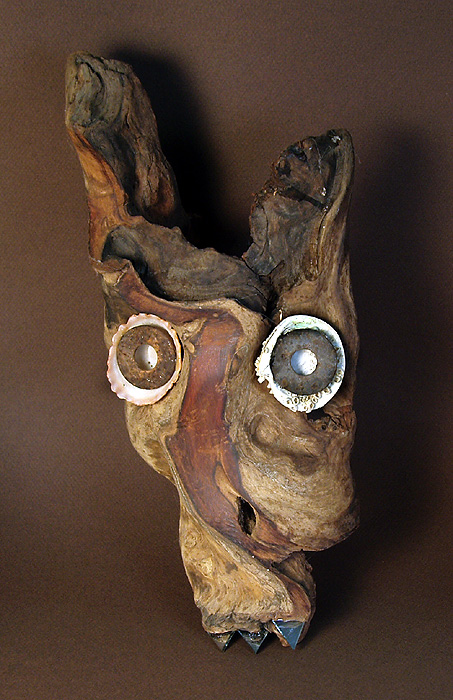
As with many tribal cultures, facial images were used in ceremonies. Ritual ecstatic dance was a means of communicating with the spirit world. Dancing with a mask and costume transformed the wearer from an ordinary individual into one participating in a great cosmological unity. The details of these rituals have been lost, and the masks that remain as artifacts were not necessarily wearable. This wooden mask dates from the early Rust Age and is a simple but expressive depiction of an animal spirit. It is constructed from a minimally modified piece of gnarled wood, shells, rusty circles, and mirrored shards for teeth. |
Mirror Mask
The mirror mask was constructed very late in the Rust Age as baroque complexity became more valued. Its themes are presented as an interplay of visual puns and allusions: a metal "bird" perched on the face doubles as a nose, a topknot of hair is part of a pond scene, and a mirror, where a brain might be, symbolizes "reflection." This is a good example of a style of mask with little scenes built into them, a precursor to the dioramas of the Age of Wonder |
Bird Cart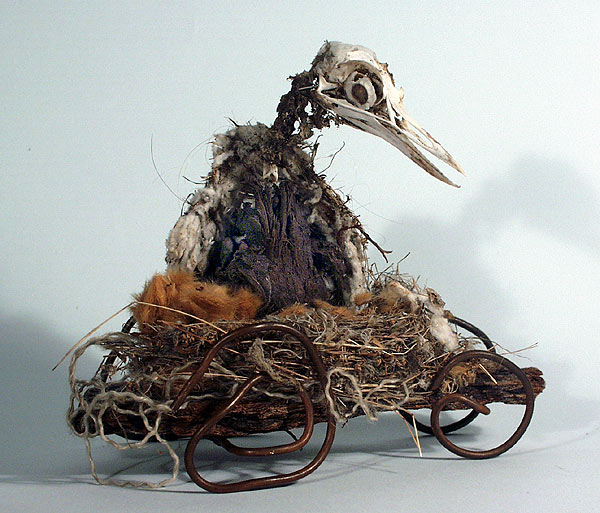
This bird cart is a symbolic wheeled vehicle which embodies a full circle of life, as symbolized by the combination of the bird nest and the skull, along with the potential motion of the cart as it traverses life's meandering paths. |
Simulacrum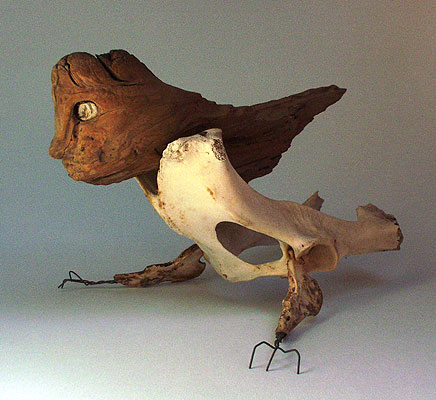
A "simulacrum" is the natural appearance of a face. This wooden profile has been made into an anomalous creature. |
Greeting Figure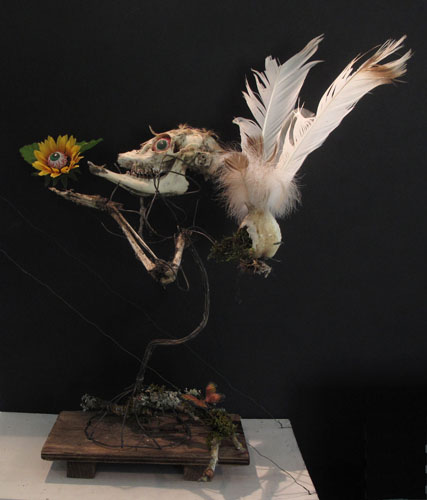
|
Pond-Moss Sculpture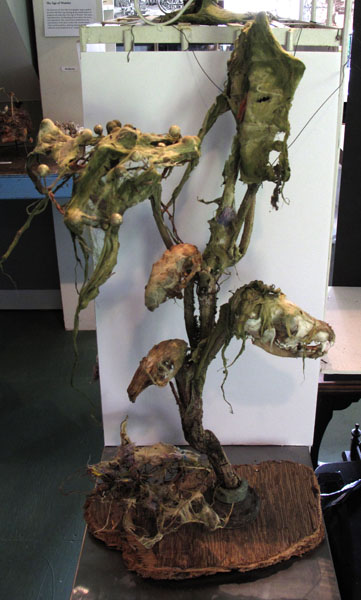 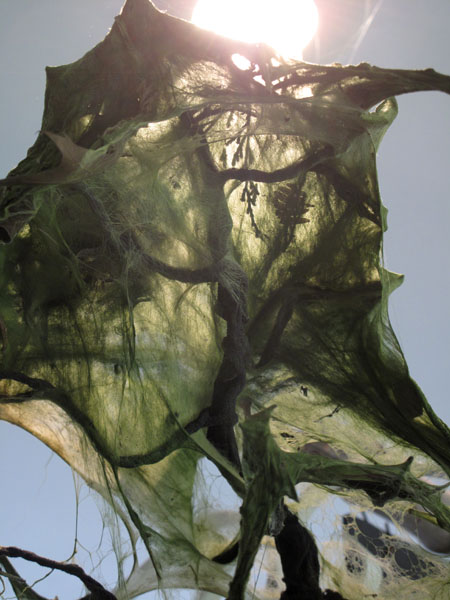
Proto-minimalist sculpture created by dipping a branched armature into a pond with a vigorous population of filamentous algae, letting it dry in the sun, and perhaps adding some embellishments. Derided by some critics at the time as "scum art" but now recognized for its aesthetic qualities |
Bone Sculpture
An oddly modernistic piece highlighting the natural sculptural properties of bones and feathers. |
Jackfruit Egg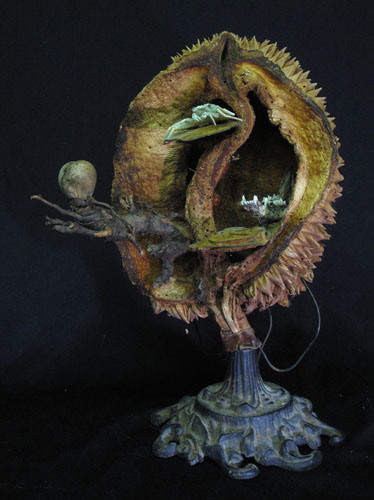
|
Fungus Lamp
Rust Age fungus lamps provided a soft glow through bioluminescence |
Leaf Book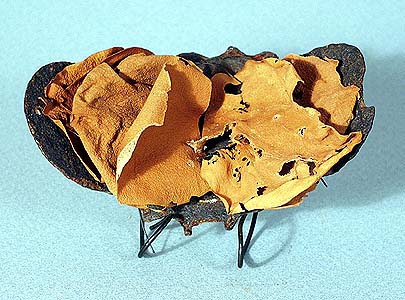
In the Zymoglyphic region, book-like artifacts appeared before the introduction of written language in the form of leaf books and metallic scrolls. Leaf books were an early attempt to impose a narrative structure on the inchoate ramblings of nature. It was thought that there was a story that could not be expressed in words to be found in the folds, tears, and textures of the book's leaves. This example uses dried magnolia petals in a rusty metal binding. |
Cosmic Listening Device
An early cosmographic device designed to tune in to information on frequencies not normally available to human perception |
The Rust Age as imagined by AI
Created by text-to-image generator DALL-E on Jan. 14, 2025